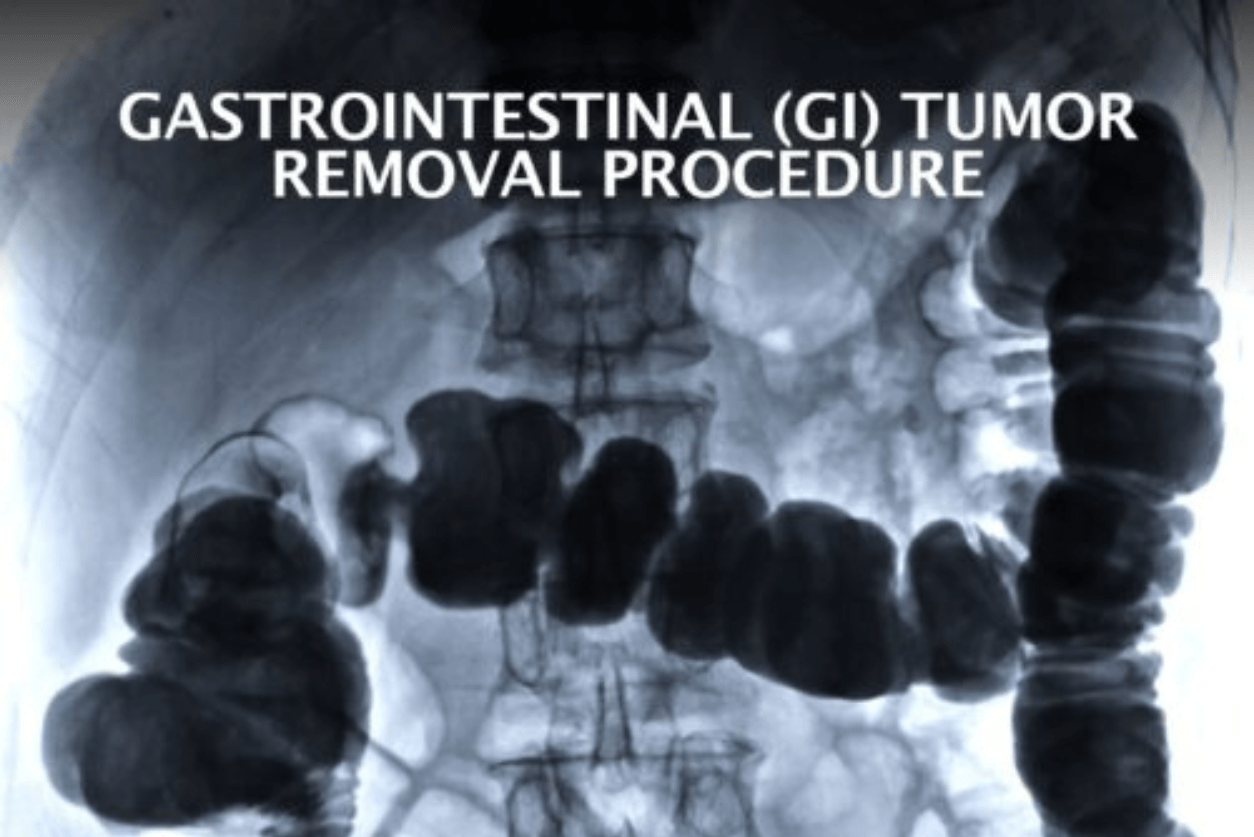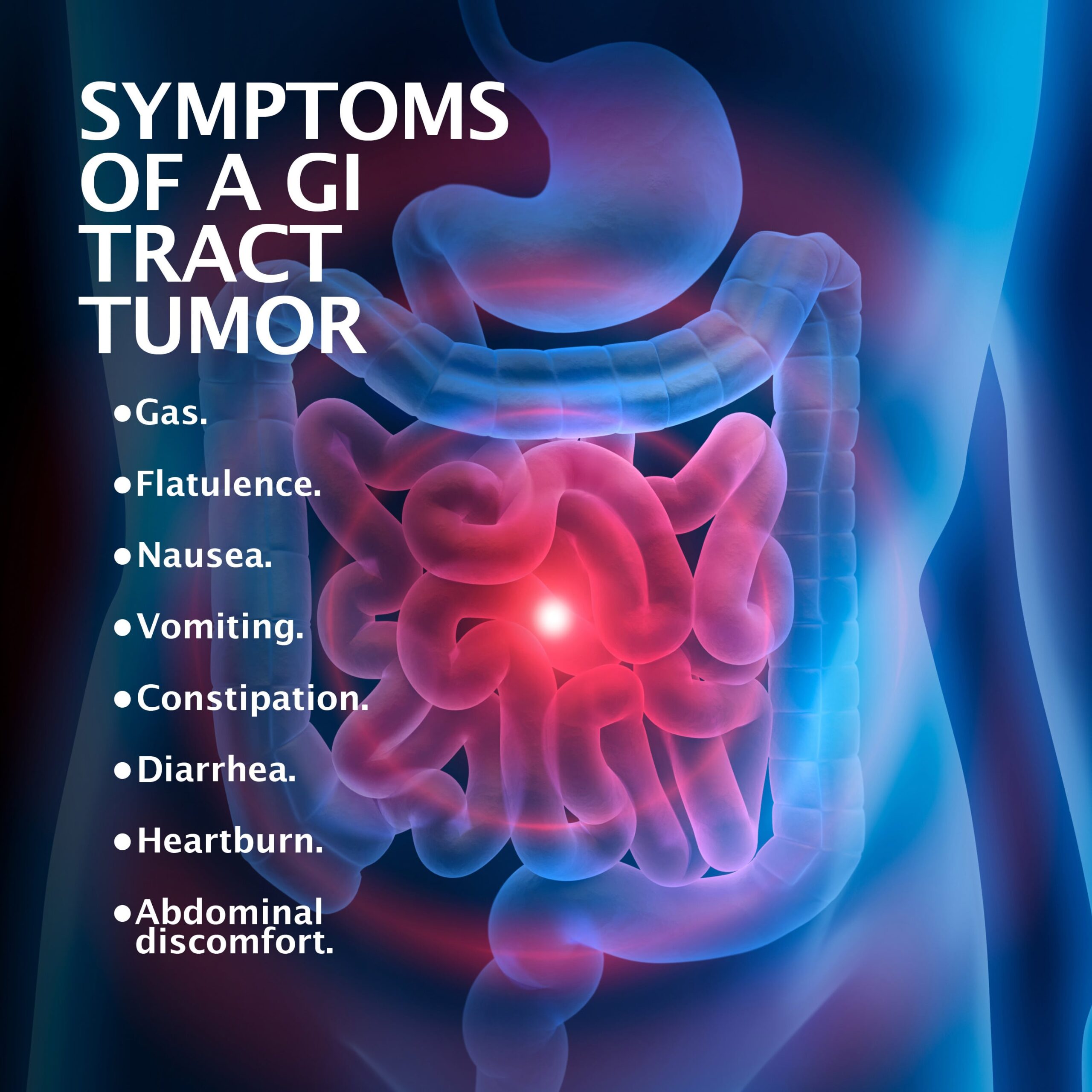
Gastrointestinal (GI) Tumor Removal Procedure
There are few medical diagnoses more frightening than a tumor. Tumors impacting the GI tract can negatively affect your well-being but could prove fatal if not quickly and properly addressed. Fortunately, you might be a candidate for treatments like tumor removal procedures.
Brief Overview of GI Tract
Your GI system, sometimes referred to as the digestive tract, is an extensive collection of organs. It is responsible for executing critical bodily functions such as breaking down foods and beverages and supplying other systems with the nutrients required to carry out other life-sustaining functions. It also rids the body of potentially hazardous waste products.
The digestive network is so extensive that it is differentiated into two sections known as the upper and lower GI.
The system’s upper region is comprised of the mouth, esophagus, stomach, and top reaches of the small intestine. The lower section is made up of the lower areas of the small intestine, the large intestine (the colon), in addition to the gallbladder, liver, and pancreas.

What Is a Tumor?
A tumor is an accumulation of abnormally growing tissues. Tumors are further separated into three sub-categories:
- Benign Tumors: Benign tumors are not formed by cancerous cells. In most cases, they remain localized to the area of the body in which they initially began. These masses are still capable of growing large and could present life-threatening complications if not caught and treated in their earliest stages.
- Malignant Tumors: These tumors contain cancerous cells. If not identified and treated as early as possible, malignant tumors often spread to neighboring and sometimes to distant systemic tissues. Specific digestive tract tumor examples include those resulting from colon, stomach, liver, esophageal, and pancreatic cancers.
- Precancerous Tumors: These masses carry the potential to turn malignant if they are not discovered and remediated in their earliest possible stages. A colon polyp is a common type of precancerous growth striking the GI network.

Causes of Digestive Symptoms Tumors
It is difficult to pinpoint one specific reason you might develop a tumor within your GI tract. It’s believed the most likely cause is a genetic mutation, causing cells to grow abnormally.
Other factors thought to increase your risk include:
- Being over age 50.
- Smoking cigarettes.
- Drinking alcohol excessively.
- Having a bacteria known as H-pylori.
- Consuming a diet consisting of fatty and overly processed foods.
Genetic predisposition is a significant risk factor. Your chances of developing a given digestive system tumor or cancer rise significantly if you have a close relative who also had the condition.
Symptoms Of A GI Tumor
The physical characteristics of a digestive network tumor vary depending on where the specific organ is located, its size, whether it is cancerous or noncancerous, and if it has shown any accompanying complications.
Abnormal growths have the capacity to cause relatively common problems, including:
- Gas.
- Flatulence.
- Nausea.
- Vomiting.
- Constipation.
- Diarrhea.
- Heartburn.
- Abdominal discomfort.
Larger benign or malignant masses can cause more significant complications such as bleeding along the gastrointestinal tract, decreased appetite, weight loss, and bowel obstructions. Cells from cancerous tumors can spread to other bodily regions causing symptoms in organs and tissues where organisms move to and grow.

Diagnosis
GI tumors are not always simple to diagnose. Your doctor might use several diagnostic techniques before reaching any firm conclusions. They can include:
- Physical Examination: Digestive system tumors might grow large enough to be felt by doctors during physical examination. Should your doctor suspect that you have a gastric system mass, they might feel the area in question for any visible or noticeable lumps or potential red flags like abdominal bloating and swelling.
- Tests: Your doctor might subject you to any number of diagnostic tests. Blood or stool samples might suggest the presence of benign or malignant growths. Samples are collected typical office visits and submitted to laboratories for careful investigation and review.
- Internal Imaging Apparatuses: Certain digestive system tumors cannot be identified without the help of internal imaging devices. Apparatuses like magnetic resonance imaging (MRI) and computerized tomography (CT scans) enable physicians to capture up-close images of internal organs and more readily identify abnormalities like tumors.
- Biopsies: The presence of cancerous tumors can be seen through a procedure called a biopsy. Surgeons extract a small piece of tissue from a specific gastrointestinal tract organ during this process. These samples are then brought to a laboratory for further evaluation.
Specific Tumor Removal Procedures
You might be a candidate for various removal procedures if you are diagnosed with a GI tumor. The specific undertaking chosen by your doctor will hinge on the growth’s location and size. Common efforts include:
- Excision: Excision is one of the more common tumor removal processes. During this undertaking, surgeons remove a tumor in its entirety. In cases where malignancies are present, your doctor might extract portions of surrounding healthy tissue to prevent metastases (the development of secondary malignant growths at a distance from a primary site of cancer). This process, known medically as resection, is an open surgery requiring large incisions.
- Debulking: Often, only a specific percentage of the tumor in question can be extracted. This sometimes results from a mass’s sheer size. Surgeons may remove a part of the tumor because removing the entire growth proves too risky and could precipitate other complications. This procedure is called debulking. For example, tumors might be too close to gastrointestinal system components like blood vessels or nerves. Injuring them could result in more injury, illness, or possibly even death. In such instances, surgeons remove as much of the tumor as possible and attempt to eradicate its remains using other treatment options.
- Organ Removal: A tumor’s presence may lead to the partial or complete removal of the organ within which it originated. GI tract procedures include gastrectomy and colectomy, where some or all the stomach and colon are extracted.
- Laparoscopic Surgery: Digestive network tumors are removed using a procedure known as laparoscopy. This is less invasive than full open surgery and involves using a tiny, thin, camera-equipped instrument called a laparoscope. Typically, this procedure is employed to remove smaller tumors
- Robotic Surgery: During this effort, surgeons guide robotic arms to extract various gastrointestinal tumors. The technique is preferred to tackle delicate operations because robotic components can be more precise and afford surgeons greater visualization. While guiding robotic arms, they can focus more on the patient’s tumor and surrounding tissues.
Factors Determining the Procedure Used
Several factors play into determining the specific procedure a surgeon might choose. Besides the size and location of the tumor, doctors might also consider your age, if underlying illnesses like cancer are present, your physical condition, and your response to previous treatments.
The Recovery Process
It is difficult to offer specific recovery times. How quickly you bounce back from tumor surgery will be significantly affected by issues including:
- Your age.
- Your physical health aside from the tumor.
- Your physical conditioning.
- Whether the mass was benign or malignant.
- If any surgical complications arose.
Physicians stress that everyone heals at their own rate, and those mending from tumor surgery should focus on their well-being and not concern themselves with the time needed before they fully recover.
Contact Us
Our practice began more than 15 years ago and has emerged as one of the leading gastroenterology practices in central Florida. We perform various diagnostic procedures using state-of-the-art equipment in a friendly, comfortable, and inviting atmosphere where patient care is always a top priority. Contact us today!